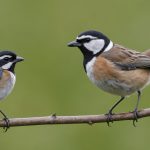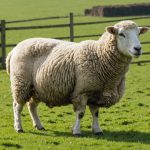Unraveling the Effects of UK Farm Subsidies on Bird Populations: A Comprehensive Analysis of Nature’s Equilibrium to the Complex Interplay
When we think about farm subsidies, we often focus on their economic and social impacts, but there’s another crucial aspect that deserves our attention: the environmental and ecological effects, particularly on bird populations. The United Kingdom, with its rich agricultural history and diverse landscapes, is a fascinating case study for understanding how farm subsidies influence the natural world.
Historical Context: From Post-War Policies to Brexit
To grasp the current situation, it’s essential to delve into the historical context of UK farm subsidies. After World War II, the UK, like many other European countries, adopted policies aimed at ensuring food security. The Common Agricultural Policy (CAP) of the European Union, which the UK was part of until Brexit, provided significant financial support to farmers. This support was not just economic; it also had profound environmental implications.
This might interest you : Groundbreaking discoveries: uk researchers reveal insights into urban hedgehog population trends
Under the CAP, farmers received subsidies based on the amount of land they farmed and the type of crops or livestock they produced. This system encouraged intensive farming practices, which, while increasing food production, often came at the expense of environmental health. For instance, the widespread use of fertilizers and pesticides, supported by these subsidies, has been linked to habitat destruction and pollution, affecting various species, including birds[1].
Environmental Impact: Ecosystem Services and Biodiversity
Farm subsidies have a multifaceted impact on the environment, particularly on ecosystems and biodiversity.
Also to read : Key strategies for ensuring safety during animal escapes at uk wildlife parks
Ecosystem Services
Ecosystem services, such as pollination, pest control, and nutrient cycling, are crucial for maintaining healthy ecosystems. However, intensive farming practices, often subsidized, can disrupt these services. For example, the reduction in semi-natural habitats like hedgerows and meadows, which are rich in plant species and provide vital habitats for birds and other wildlife, has been a direct consequence of subsidized intensive farming[3].
Biodiversity
The biodiversity of farmland is significantly influenced by farming practices. Subsidies that promote monoculture farming and high-input agriculture can lead to a decline in farmland biodiversity. Birds, in particular, are sensitive to changes in land use and habitat quality. The loss of hedgerows, for instance, affects bird species such as the skylark and the linnet, which rely on these habitats for nesting and foraging[3].
Bird Populations: Species Responses and Conservation
Bird populations are a key indicator of environmental health, and their responses to changes in farming practices are telling.
Species Responses
Different bird species respond differently to changes in land use and farming practices. For example:
- Grassland Birds: Species like the lapwing and the curlew are highly dependent on grassland habitats. Subsidies that encourage intensive grazing systems can lead to the degradation of these habitats, resulting in declining bird populations.
- Farmland Birds: Birds such as the partridge and the corn bunting are adapted to farmland environments. However, the shift towards more intensive and monoculture farming, supported by subsidies, has led to a decline in their populations.
- Migratory Birds: Migratory birds, which rely on various habitats throughout their migration routes, are also affected by changes in land use. For instance, the loss of wetlands and other natural habitats due to subsidized agricultural expansion can impact migratory bird species[3].
Conservation Efforts
To mitigate the negative impacts of farm subsidies on bird populations, conservation efforts are crucial. Here are some strategies:
- Agri-Environmental Schemes: These schemes provide incentives for farmers to adopt environmentally friendly practices, such as maintaining hedgerows, creating wildlife-friendly habitats, and reducing the use of chemicals.
- Organic Farming: Organic farming practices, which are often less intensive and more biodiversity-friendly, can be supported through subsidies. This approach can help in preserving natural habitats and promoting ecosystem services.
- Habitat Restoration: Restoring natural habitats such as wetlands, meadows, and forests can provide critical breeding and foraging grounds for bird species.
Table: Comparing Farming Practices and Their Environmental Impacts
| Farming Practice | Environmental Impact | Effect on Bird Populations |
|---|---|---|
| Intensive Monoculture | High use of fertilizers and pesticides, habitat destruction | Decline in farmland biodiversity, loss of habitats for birds like skylarks and linnets |
| Extensive Grazing | Less intensive, more semi-natural habitats preserved | Beneficial for grassland birds like lapwings and curlews |
| Organic Farming | Lower use of chemicals, more biodiversity-friendly | Positive impact on farmland biodiversity, preservation of natural habitats for birds |
| Agri-Environmental Schemes | Incentives for environmentally friendly practices | Creation of wildlife-friendly habitats, preservation of hedgerows and meadows |
The Role of Science and Policy in Shaping the Future
Environmental Science and Research
Environmental science plays a critical role in understanding the impacts of farm subsidies on ecosystems and biodiversity. Research at different spatial scales, from local to global, helps in identifying the most effective conservation strategies.
For instance, studies have shown that maintaining ecological corridors and preserving semi-natural habitats are crucial for biodiversity conservation. This research informs policy decisions, helping to create more environmentally friendly subsidy systems[3].
Environmental Policy and Decision Making
Environmental policy is pivotal in shaping the future of farm subsidies and their impact on bird populations. Policies that integrate ecological considerations into agricultural practices can significantly mitigate negative environmental impacts.
- Land Use Change: Policies that encourage sustainable land use practices can help in preserving natural habitats and reducing the impact of agricultural expansion on bird populations.
- Energy and Resource Use: Policies promoting the use of renewable energy and reducing the reliance on chemical inputs can help in minimizing the environmental footprint of farming.
- Global Cooperation: Global cooperation in environmental policy can ensure that conservation efforts are coordinated across different regions, addressing the global scale of environmental change.
Practical Insights and Actionable Advice
For those interested in making a positive impact, here are some practical insights and actionable advice:
For Farmers
- Adopt Agri-Environmental Schemes: Participate in schemes that provide incentives for environmentally friendly practices.
- Diversify Farming Practices: Incorporate diverse crops and livestock to promote biodiversity.
- Reduce Chemical Use: Opt for organic or integrated pest management (IPM) practices to minimize the use of chemicals.
For Policy Makers
- Integrate Ecological Considerations: Ensure that agricultural policies consider the ecological impacts of farming practices.
- Support Conservation Efforts: Provide funding and incentives for habitat restoration and conservation programs.
- Promote Sustainable Land Use: Encourage sustainable land use practices through policy and legislation.
For Consumers
- Support Sustainable Agriculture: Choose products from farmers who adopt environmentally friendly practices.
- Advocate for Policy Change: Support policies that prioritize environmental conservation and biodiversity.
- Educate Yourself: Stay informed about the environmental impacts of farming practices and the role of subsidies in shaping these impacts.: Balancing Food Production and Environmental Conservation
The relationship between farm subsidies, bird populations, and environmental health is complex and multifaceted. As we move forward, it is crucial to balance the need for food production with the imperative of environmental conservation.
In the words of a UK farmer reflecting on the challenges faced by his community: “If you want to make a living from farming, you have to think beyond just the economic returns. The health of our ecosystems, the biodiversity of our landscapes, and the well-being of species like birds are all interconnected with our farming practices. It’s time we recognize this and make changes that benefit both our farms and our environment”[1].
By understanding the historical context, environmental impacts, and the role of science and policy, we can work towards a more sustainable future where farm subsidies support not just food production but also the health of our ecosystems and the biodiversity they harbor.











